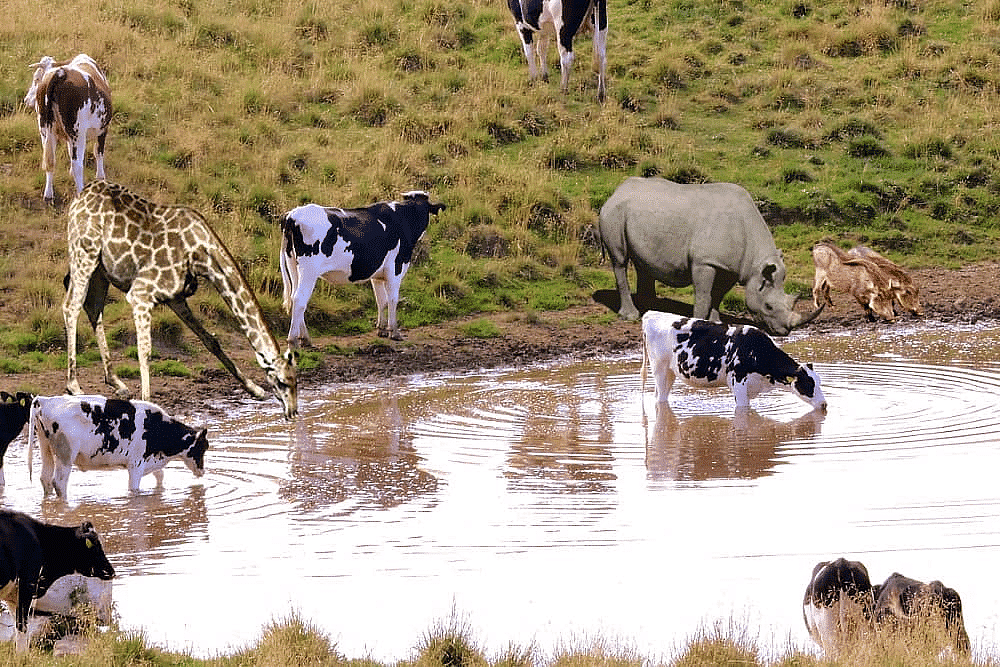Class 3 Science - Living and Non Living - CBSE Worksheets Solutions
MCQs
Q1: All of these are living things except
Ans: Option (d)
Window is a non living thing, because it does not grow or breathe or eat food.
Q2: Which of the following does a butterfly use to smell and find food?
(a) Hair
(b) Nose
(c) Antenna
(d) Wing
Ans: Option (c)
A butterfly uses its feet and antennae to smell the flowers.The butterfly's knob-shaped sensors on the end of its antennae pick up smells that lead it to a flower with nectar.
Q3: Humans breathe through
(a) feelers
(b) gills
(c) stomata
(d) lungs
Ans: Option (d)
Your lungs bring fresh oxygen into your body. They remove the carbon dioxide and other waste gases that your body doesn't need. To breathe in (inhale), you use the muscles of your rib cage – especially the major muscle, the diaphragm.
Q4: All of these are non-living things except
(a) balloon
(b) ant
(c) thread
(d) honey
Ans: Option (b)
Ant is a living thing. We can see it move, eat and grow.
Q5: Which of these reproduces by giving birth to babies? Ans: Option (d)
Ans: Option (d)
Rabbits give birth to babies, all the other animals given lay eggs.
Q6: Categorise the following into living (L), non-living (NL) and once-living (OL).

Ans:
Salt and light bulb are non living.
Bird, plant and ant are living.
Apple, cooking oil and butter were once living.
Apple: Fruit from the apple tree.
Cooking oil: Seeds of plants.
Butter: Made from milk obtained from animals.
Q7: Give two examples of the following
(a) Two living things Human being, Animals
(b) Two features of living things Living things can move, Living things can breathe, Living things need food.
(c) Two non-living things Table, Bucket
(d) Two features of non-living things Non-living things do not need food, Non-living things do not reproduce.
Q8: True or False
(a) All animals move with legs. False
(b) Living things get energy from food. True
(c) Plants cannot breathe. False
(d) Plants do not move from place to place, but their body parts may move. True
(e) Air is necessary for living things to get energy from food. True
EduRev Tips:
- All the animals do not move with their legs, for example snakes.
- Organisms use the stored energy in food to fuel all living processes.
- Yes, like animals plants also breathe. All living organisms, including plants, receive their energy required for their survival from a chain of chemical reactions called respiration.
- With their roots firmly stuck in the soil, plants may not have the ability to leg it like we do, but that doesn't mean they can't move. A seedling can make a right hand turn within hours, a tendril can curl around a stick in minutes, and a Venus fly trap can catch its lunch in under a second.
- Yes the above statement given is absolutely: Air contains Oxygen which is intake by the living organisms like plants and animals for respiration.
Q9: Match the following
| (a) Snakes move using their | (i) Seeds |
| (b) Plants reproduce with | (ii) Muscles |
| (c) Lifespan | (iii) Laying eggs |
| (d) Toy is a | (iv) A period of which an animal lives |
| (e) Snake reproduce by | (v) Non-living thing |
(a) Snakes moves using their - (ii) muscles
Snakes do not have limbs like other animals. Instead, they move using their flexible body, which consists of a long spine with up to 400 ribs attached. Muscles connected to the ribs help snakes crawl, climb, and swim, and wide belly scales help them grip surfaces.
(b) Plants reproduce with - (i) seeds
Plants that reproduce by seeds. Seed plants have special structures on them where male and female cells join together through a process called fertilisation.
(c) Lifespan - (iv) A period of which an animal lives.
Life span is the period of time between the birth and death of an organism.
(d) Toy is a - (v) Non-living Thing.
Toy is a non living thing as it cannot eat, see, grow etc.
(e) Snakes reproduce by - (iii) laying eggs.
Snakes that lay eggs are called oviparous. Most snakes develop eggs inside of them and eventually lay those eggs.
Q10: Fill in the blanks
(a) Climbers such as money plants climb upwards with the support of a stick as they grow.
(b) Living things need food and air .
(c) Plants can feel sunlight and grow towards it.
(d) Living things need to breathe air to stay alive.
(e) Reproduction means to give birth to young ones.
EduRev Tips:
- Money plant is a climber. Climber is a plant which grows by taking support of another plant or any vertical surface. It rolls on the support and takes mechanical support to grow vertically.
- Most living things need food, water, light, temperatures within certain limits, and air. Living things have a variety of characteristics that are displayed to different degrees: they respire, move, respond to stimuli, reproduce and grow, and are dependent on their environment.
- Plants grow toward the sunlight to be able to generate energy by photosynthesis.
- Most living things need food, water, light, temperatures within certain limits, and air.
- Reproduction means to reproduce. It is a biological process by which an organism reproduces an offspring who is biologically similar to the organism.
Answer the following questions in brief.
Q11: What are living things? Give examples.
Ans: Living things are born, grow, reproduce, grow old, and die. People, plants and animals are all living things. Living things need air, water, food and shelter to survive. Non-living things are not born.
Q12: Name four living things which use lungs for breathing.
Ans: Dogs, cats, horses, cattle, sheep, pigs, monkeys, rats and a host of other animals have a similar lung structure to humans. Thus they use lungs to breathe.
Q13: Why do animals move from place to place? Why is there no need for plants to move around?
Ans: Animals move from one place to another for food and water , for shelter and protects from enemies. Whereas plants do not usually move from place to place is because they are rooted into the ground by their roots; roots also provide support so the plants don't fall over.
Q14: What are non-living things? Give examples.
Ans: Non living things are man made. They do not move, do not grow, do not need food. Examples of non-living things are chair, television, car, utensils, pen, etc.
Q15: What is reproduction?
Ans: Reproduction means to reproduce. It is a biological process by which an organism reproduces an offspring who is biologically similar to the organism. Reproduction enables and ensures the continuity of species, generation after generation. It is the main feature of life on earth.
|
19 videos|48 docs|30 tests
|
FAQs on Class 3 Science - Living and Non Living - CBSE Worksheets Solutions
| 1. What are the main characteristics that distinguish living things from non-living things? |  |
| 2. Can you give examples of living and non-living things? |  |
| 3. How do living things obtain energy? |  |
| 4. Why is it important to learn about living and non-living things? |  |
| 5. How do non-living things affect living things? |  |

|
Explore Courses for Class 3 exam
|

|

















